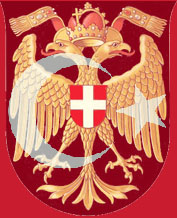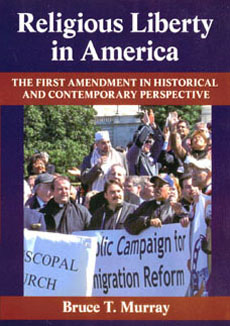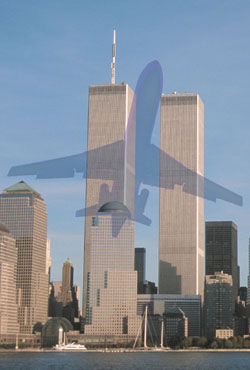Religious liberty in a time of intolerance?
Aftermath of Sept. 11 attacks highlights challenges of religious pluralism
By Bruce T. Murray
Author, Religious Liberty in America: The First Amendment in Historical and Contemporary Perspective
The Sept. 11, 2001 terrorist attacks are a decade in the past, but reaction against the religion of the perpetrators is very much in the present: A once-obscure Florida preacher dominated the news cycle with his threat to burn copies of the Koran; the proposed Islamic center near “ground zero” in Manhattan has polarized opinions nationwide; and a proposed mosque in southern California has drawn heated opposition and counter-opposition.
How can America’s longstanding values of religious liberty and pluralism survive in such an atmosphere?
Fear of the religious “other” is not new to the American experience. Hostility toward Catholics and Quakers, in particular, was rife in Colonial America. Muslims were not a substantial presence in early America (although many slaves from Africa practiced Islam); but in the 17th century, Turkish Muslims were making a significant impact on the world stage.  The Ottoman Empire had been steadily advancing into Europe since conquering Constantinople (now Istanbul) in 1453. By 1683, the Turks had placed Vienna under siege for a second time, threatening conquest of all of Europe. Coincidentally, the second Battle of Vienna began on Sept. 11, 1683. An allied army led by Polish King Jan III Sobieski defeated the Turkish army, checking further expansion of the Ottomans in Europe.
The Ottoman Empire had been steadily advancing into Europe since conquering Constantinople (now Istanbul) in 1453. By 1683, the Turks had placed Vienna under siege for a second time, threatening conquest of all of Europe. Coincidentally, the second Battle of Vienna began on Sept. 11, 1683. An allied army led by Polish King Jan III Sobieski defeated the Turkish army, checking further expansion of the Ottomans in Europe.
Meanwhile, Western Europe and England were still reeling from a century of religious wars stemming from the Protestant Reformation and Counter-Reformation. The wars of religion in Europe culminated with the Thirty Years War (1618-1648), in which the Catholic and Protestant powers faced off in one of the most destructive conflicts in European history. The English Civil War (1642-1646) divided the island along religious and ideological lines – Puritans and Anglicans, parliamentarians and monarchists, suspected Catholics and sympathizers all pitted against one another. Not surprisingly, these conflicts, suspicions and prejudice spilled over from the Old World to the New.
It is in this troubled historical milieu that the First Amendment’s precepts of religious liberty were developed. Despite the wars, bloodshed and strife, the leading thinkers in colonial America struck out on a different course, which culminated in the drafting of the First Amendment’s Religious Liberty Clauses: “Congress shall make no law respecting an establishment of religion, or prohibiting the free exercise thereof…”

The University of Massachusetts Press book, Religious Liberty in America: The First Amendment in Historical and Contemporary Perspective by Bruce T. Murray, shows how the United States arrived at its unique constitutional arrangement separating church and state, while guaranteeing freedom of religion and individual conscience.
While some of the early conflicts are now settled, many of today’s contentious issues relating to religion and politics are very much the same, as Murray documents. Throughout the book’s seven chapters, Murray connects past and present, placing particular emphasis on current controversies such as the mixing of religion and politics, battles over religious symbols in the public square, the “culture wars,” immigration and faith-based initiatives.
“Murray traces such significant topics as the development of religious pluralism and its ironic counterpart, civil religion. Nowhere is there such a clear and concise explanation of the issues as Murray offers in this book.”
— Philip Goff, Associate Professor of Religious Studies and Director of the Center for the Study of Religion and American Culture, Indiana University-Purdue University, Indianapolis.“Although the book's subtitle indicates that its focus is the First Amendment, the development of legal doctrine forms only part of the tale Murray seeks to tell. What he has in mind, instead, is to explain how American society accommodates diversity of religious belief and practice.”
— Kevin R.C. Gutzman, History Department, Western Connecticut State University, the Independent Review, Winter, 2009
Purchase Religious Liberty in America on Amazon.com or the University of Massachusetts Press Web site.
Find out more about the author here.
Review critical of Murray's treatment of religious diversity:
“Christianity seems to frame much of the book's focus, even though Murray consistently reminds us of the diversity of religious beliefs in the United States. A result is the (unintended) hint of ‘othering’ when non-Christian faith traditions are mentioned. In a two page discussion of Muslims in America (the most extensive in the book), Murray argues that ‘Muslims elicited fear and loathing in the West then as they do now,’ suggesting that after September 11, ‘Muslims may prove the ultimate test of American tolerance and commitment to free exercise of religion.’”
— David A. Reichard, California State University Monterey Bay, The History Teacher, February 2009
See more reviews here, and criticism here.


